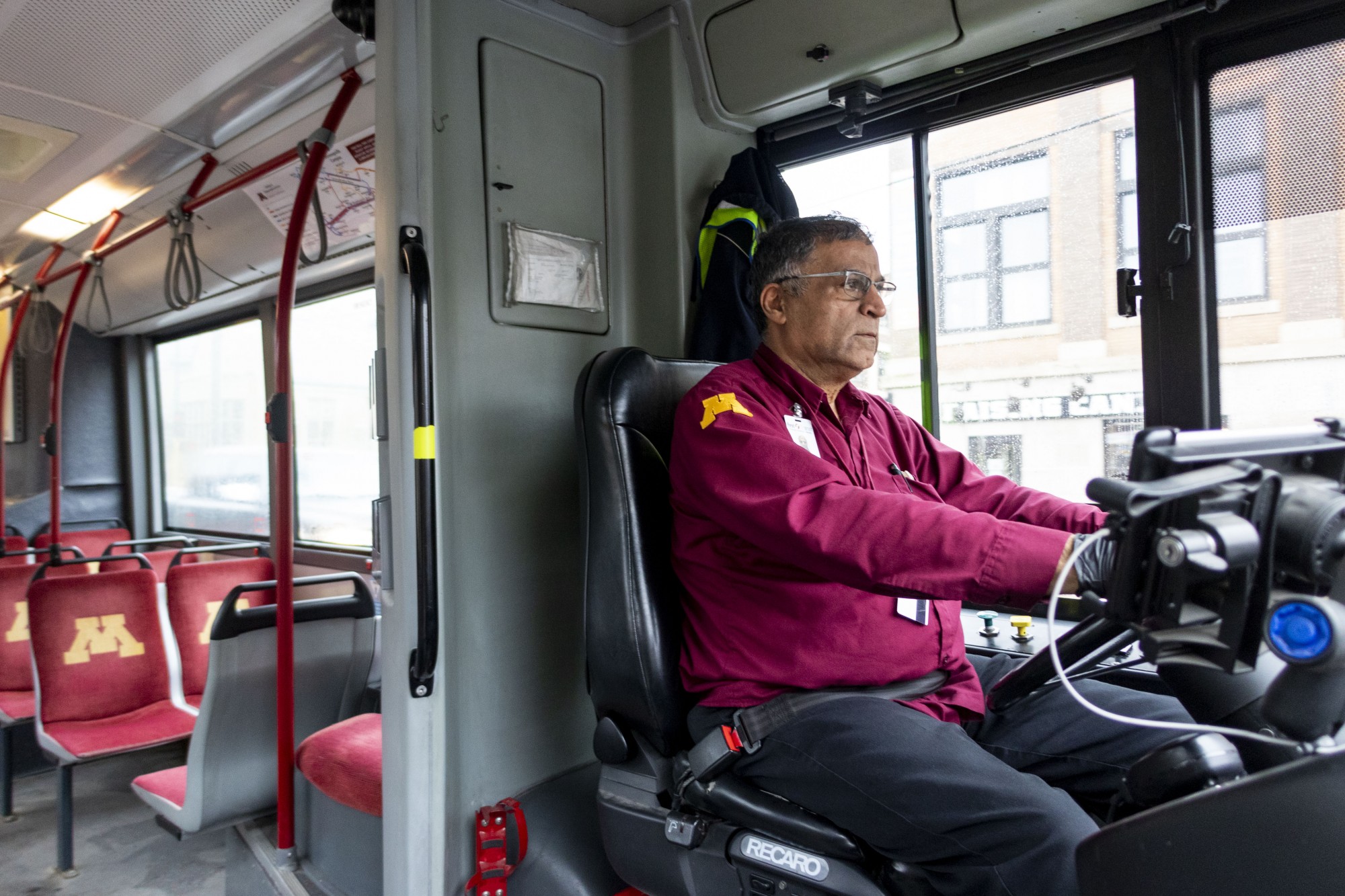Normally, University of Minnesota buses are packed full of students. Nowadays, buses are often empty — one bus driver said she only sees about 15 students a day.
While most of campus life has come to a standstill as the University works to address the COVID-19 outbreak, buses continue to operate and campus, and bus drivers have been hit hard. Their hours have decreased, and many bus routes have been reduced or eliminated after classes moved online and students vacated campus.
Shifts and bus routes are doled out based on a bidding system based on seniority, according to bus driver Xandra Case.
“Our management is trying to make it as fair [as possible], but we can only work with what we’re given,” Case said. She estimates that the number of bus drivers has been reduced by over half, with most drivers suffering from a cut in hours.
According to Jacqueline Bass, a representative for PTS, the University is responsible for creating the schedule of how many buses operate and when, but a third party company that contracts bus drivers for the University makes staffing decisions.
University policy states that those employed by the University can receive emergency paid sick leave for COVID-19-related reasons, but since the bus drivers are contracted through a third party, the University does not have control over their payment procedures, according to Bass.
“I’m worried about not having work, but when all the students were here, I was worried about getting ill,” said an anonymous bus driver. The bus driver asked to not be identified for fear that it would impact her job.
“I guess I really can’t complain because I’m still working,” she said. “It’s stressful because you don’t know if you are going to be able to put food on the table or not.”
Despite the number of students on campus dropping drastically, the buses are still essential for those who remain.
“Since I live here in Bailey Hall, the Campus Connector is like my lifeline to the rest of campus,” said freshman Jasmine DeGuzman, who lives on the St. Paul campus, while riding a bus with only three other students Tuesday afternoon. “Taking the bus has been a huge part of my freshman year.”
Many bus drivers have raised concerns about how the buses are being sanitized to help prevent the spread of COVID-19, being told extra measures were being taken to sanitize the buses. Despite driving fewer students, those remaining on campus could still put the public at risk.
“Extra measures are being taken [to sanitize buses],” Bass said. However, Bass said she does not know the specific details about those additional sanitation steps.
The third-party company that operates University buses, First Transit, has increased health and safety measures beyond usual activities, according to PTS. Enhanced cleaning and disinfection procedures are in place, a statement on the PTS website reads.
A representative from First Transit said in an emailed statement that there are procedures in place to prevent the spread of illness, including communicating with bus drivers about frequently washing their hands and using hand sanitizer.
“There are also guidelines in place when it comes to cleaning the interior of a bus to minimize exposure,” the statement reads.








